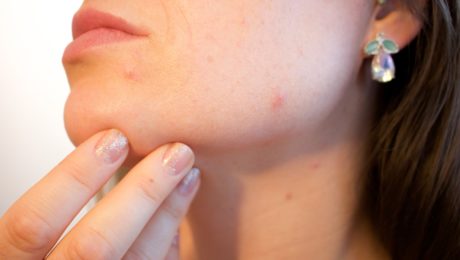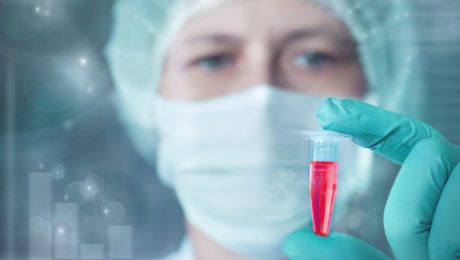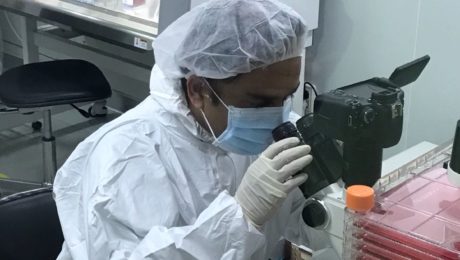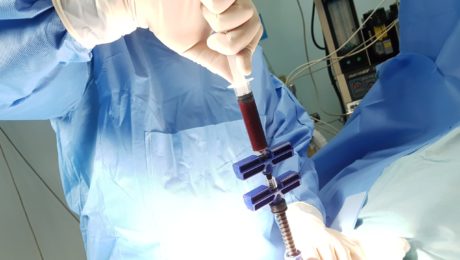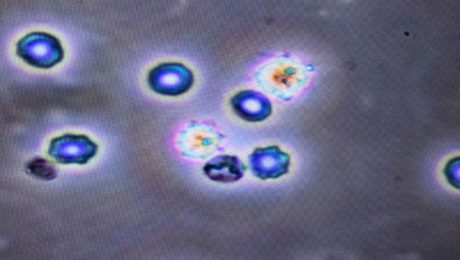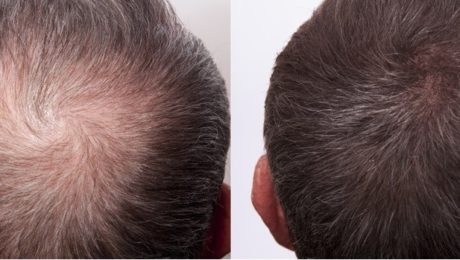Three popular PRP Treatments for Skincare
Thousands of skincare centers across the nation provide at the very least one kind of PRP treatment. However, most do not go any farther than micro-needling with a topical solution. This is mainly because it is far simpler than all other methods, and it is incredibly popular. However, it would make more sense to many practices who have invested in equipment for add in PRP injections as well.
PRP Is Growing Substantially
Regardless of what is being treated, the protocol for obtaining PRP is the same: You draw the blood, place it in the centrifuge, and then take out the PRP from the rest of the material. This simplicity can be combined with PRP’s vast usability to create significant and mindblowing advances in modern medicine.
This includes skincare as well, as the PRP that you get from patients can be used in a plethora of ways. Here are a couple of examples of what can be performed by dermatologists and plastic surgeons the world over.
- Skin Augmentation
Adding a topical solution of PRP ccombined with microneedling can help to regenerate dying skin cells, and makes skin feel soft. Although this will probably work for most clients, many might want more. For instance, if you want to plump up the face, injecting PRPinto the dermis can help provide both beauty, as well as a healing process.
Although if you want to create volume, you will need a filler. One way to do this is by using a Platelet-Poor Plasma filler, or PPP, which is often left over from the PRP process. You can also use Hyaluronic Adic. A combination of these with PRP have been known to provide wonderful results, with some clinicians boasting a 100% success rate.
- Vitiligo Correction
Many companies will shill out millions of dollars to find out how to turn defective cells healthy again. Many are looking into DNA Technology. However, simply utilizing PRPP may provide the same results. Some studies have shown that adding CO2 laser therapy for correcting vitiligo to a PRP treatment can increase it’s effectiveness by 4 times. This can also be beneficial in other areas, such as correcting wrinkles, and even acne scars. So combining PRP treatments are conventional therapies can boost the effects tremendously.
So if PRP can help boost the effects of lasers, it may be able to also boost the effects of other skin therapies as well. It seems like a great opportunity to continue doing the work that you do, but this time it is more effective due to a simple method. This is something that hundreds of skin care facilities are already providing for their clients.
- Hair Rejuvenation
Mesotherapy is a common treatment that utilizes microinjections that deliver a medication throughout the skin’s service. This prodecure has been able to provide great quality results by adding peptides and vitamins to the mix as well. However, one of the best ways that you can incorporate this into your practice is by using PRP therapy.
Mesotherapy can also be used to provide an even amount of PRP all over the body, including face, neck, hands, etc. This helps to rejuvenate the skin and reduce wrinkles, discoloration, and stretch marks. However, this works best when it comes to hair loss treatments. In fact, adding PRP with mesotherapy has exceeding the expectations that the industry has set.
This is why we think PRP therapy is something that every skincare clinic should offer. Since hair loss effects both men and women, it is important to try to work to make your treatments as effective as possible. Your patients will benefit from it and satisfaction will rise, is there any other reason to put it off?
“But I Never Heard Of Them!”
Some of these treatments and combinations are incredibly new, so new, that many might not have heard of them before. However, this is why signing up to use them as soon as possible is vital. This way, you can bee a step ahead of the competition when it comes to providing great services.
The demand for PRP is only growing over time, and the sooner you can get on board, the better off your practice will be. If you are interested in learning more about PRP therapy, or checking out our line of PRP equipment, you can do so by going to the Adimarket website and checking it out for yourself.
PRP provides more effective treatments for less time, less money, and more satisfaction. Tons off practices have been putting their trust in this treatment and have been reaping the benefits long term. PRP is here to stay, so are you ready to seize the potential of this great medical revolution?,
- Published in Corporate News / Blog
Why Dermatologists Should Use Platelet-Rich Plasma (PRP)
PRP is a powerful means of regenerating tissues, and has pretty a pretty large growth in popularity among patients, especially those who suffer from alopecia. This is despite the apparently lack of evidence that supposedly surrounds the treatment.
Is It A Lack Of Evidence Or Just A Lack Of Funding?The lack of widespread research may have more to do with funding than anything else. Many of the studies that are currently out there about PRP were unfunded, especially on the subject of Hair Regeneration. However, despite this lack of funding, the demand for PRP treatments for hair loss is growing at an unprecedented rate.
When it comes to PRP kits, there are three kinds to choose from. Ones that use gels, one that create a buffy coat, and one that creates a buffy coat utilizing a double spin. It is pretty unanimous that the last option creates the most reliable and concentrated form of PRP possible, at 5-7 times the baseline amount of platelets.
This concentration level also has the most nutrients which helps for the regeneration of blood vessels and stem cells. One commonly recommended tactic is to combine PRP hair regeneration with micro-needling with a topical layer of PRP. This may be beneficial in some cases.
Micro-needling is a way to create small amounts of trauma, which the body reacts to via a healing response. This response, mixed with PRP, can help to stimulate the growth of new cells.
In some instances, a dermatologist might have three sessions, with the first two being PRP injections, and the middle one being a micro-needling with a PRP topical solution. However, micro-needling is completely optional. Whether you choose to use this method or not, you will still be injecting the patient with PRP at the scalp.
Combining PRP with an Allograft Matrix
One thing that many hair regeneration experts do is combine PRP with an Allograft matrix. These are often used when healing wounds, as it changes inactive adult stem cells back into an active form. This makes the wounds heal faster.
This is because an allograft acts like a scaffold that proliferates cell regrowth and speeds up the healing process. Many experts in the fields have noted a high degree of success by using this method.
Allografts are generally made from using the bladder tissue of pigs. However, a better type of allograft is made from amniotic tissues and fluid. This type of allograft can be utilized with little or no chance of being rejected by the body, as opposed to those made from pig bladders.
Medications Vs PRP
The main drugs that are commonly used to regrow hair are Minoxidil and Finasteride. These were designed to be able to prevent male pattern hair loss, but did almost nothing when it came to regrowing lost hair. However, these drugs have been well known to only be temporary solutions, and if the patients stopped taking the drugs, the benefits of them would quickly reverse. These are also not 100% effective at stopping hair loss either, but it can slow the progression.
However, PRP is different. It may actually be the only treatment on the market that has been clinically proven to regrow hair and heal hair follicles. This means that it only only slows down hair loss, but actually helps with hair growth.
Many may ask how temporary the solution is, saying that the other drugs on the market are just temporary solutions. However, many pateints report that a PRP and allograft combination treatment was able to give them great results that lasted for nearly half a decade or more with just one treatment. However, each patient is indeed different.
Aside from drugs, we only had one other choice when it came to hair loss, and that was hair transplants. This is why PRP has been growing in popularity in hair regrowth groups lately. Although those other treatments are not obsolete in the slightest, adding PRP therapy can be both beneficial and safe to patients in the long run.
Some people combine the two, and use PRP alongside Minoxidil and Finasteride with little to no side effects seen to date. You can even combine PRP with laser light scalp stimulation therapy, but that is up to you.
So Try It Out
PRP for hair regeneration, skin rejuvination, and even facelifts is going strong with no sign of stopping. Many dermatologists have already taken the plunge, and since this treatment is not going anywhere anytime soon, it may behoove you to join in on it too.
For more information about PRP including equipment, check out the Adimarket website. We provide great tools for any practice to utilize.
- Published in Corporate News / Blog
Amniotic Fluid
When it comes to side effects, ease of preparation, fast treatment times, and cost, PRP is above them all in orthobiologics. However, aside from PRP, there is one other alternative that is showing promise: Amniotic Fluid.
Due to it being a really good source of regenerative material that is not only highly proliferative, but also that produces almost no immune response, Amniotic Fluid has been a popular substance to theorize about since the late 1930’s. That is not all though, as this fluid is also high in collagen, growth factors, and hyaluronic acids. These are found in high quantities, making them a good choice for promoting regeneration.
This fluid is also high in stem cells that contain B7H4, a substance that promotes wound healing and even shows promise as a way of growing functional blood vessels. This was demonstrated to be true by scientists at Rice University and Texas Children’s Hospital.
However, we are not going to talk about that kind of Amniotic fluid. The one that we are going to talk about has been frozen, thereby killing the stem cells. This is actually a good thing, as the FDA has banned the presence of stems cells in amniotic fluids.
How Allografts Of Amniotic Fluids are Created
Allografts (Grafts taken from someone besides the person receiving it) of Amniotic Fluids are like Platelet-Rich Plasma that is already ready to be injected. This way, you and your patients receive all of the benefits associated with PRP therapy, without having to extract it yourself.
This amniotic fluid is taken with consent from mothers who decided to donate this fluid during a c-section. Not only were the women themselves pre-screened, but the fluid is tested again afterwards, and then prepared to be instantly used for a wide watch of medical ailments.
The fact that Amniotic Fluid has very little effect on one’s immune system makes it a wonderful allograft. This means that the body is far less likely to attack the donor material, making it far less likely to be rejected. Also, much like PRP, they are also known to fight inflammation, and keep microbes at bay. They are also multipotent cells, meaning they can turn into any cell they need to, making them a gold standard for regenerative medicine.
Since Amniotic Fluid is not taken from the person it it being used on like PRP, it misses out on a lot of those benefits. However, the large amount of elastin, fibronectin, and collagen makes it a great substance to use in wound healing and cell regeneration. It also contains a ton of growth factors, including PDGF, EGF, VEGF, and FDF to name a few.
Amniotic Fluid Allograft
It is often used to improve chronic pain conditions, as well as sports injuries, arthritis, and potentially even the symptoms of aging. It can be used by doctors along with PRP therapy to increase the effectiveness of the therapy. It can also be combined with bone marrow aspirates or hyaluronic acid.
The Potentials Of This
Many doctors may not want to spend the time and money investing in PRP therapies, so we think that Amniotic Fluid in general, could be a wonderful alternative to PRP therapy. Also, this can also be used as a stepping stone to help providers that are new to regenerative medicine to potentially get to PRP or stem cells over time.
We are convinced that once you get started with regenerative medicine, whether it be Amniotic Fluids, PRP therapies, or stem cell therapy, you will prefer it over other invasive procedures for sports injuries, arthritis, and other wounds. This will help save at least a few patients from having to do any unnecessary surgical procedures.
- Published in Corporate News / Blog
Platelet-Rich Plasma (PRP) For Osteopathic Physicians
Although they can perform surgeries, osteopathic physicians try to avoid doing so whenever possible. Because of this, PRP seems to be an excellent fit for their practice. Since Osteopathy was built on the idea of self-healing, PRP seems to be a perfect fit.
A little while ago, PRP research was reviewed by The Journal Of The American Osteopathic Association, and concluded that more studies and evidence would be needed to make a solid statement on it. A little while later, a case study was filed, showcasing an 18 year old high school football player who suffered from a sports injury. The case study showed that the muscle injury healed rapidly under the effect of PRP therapy. So although PRP is not constantly held up on a pedestal by the mainstream yet, does not mean that Osteopathic Physicians can’t learn a lot or benefit from the use of PRP in their practice.
How Osteopathic Physicians can Benefit From PRP
- It’s Holistic
Due to the fact that Osteopathic Physicians prefer to treat the patient, as opposed to just treating a disease or the symptoms, PRP is a great fit. It works by using the body’s own resources and mechanics and helps the body to heal itself over time. It works because, instead of simply dealing with symptoms, like many practices and conventional medicine does, it works to deal with the problem head on.
For instance, there are many examples of PRP therapy taking the place of surgery and medicine. Such as the cases where female patients were able to revive their sex drive, although they were initially treated for incontinence. So although PRP therapy was created and pushed by allopathic doctors at first, PRP works wonders in the field of Osteopathic medicine, and can become one of the best methods of treatment for Osteopathic physicians.
- Musculoskeletal Issues
In some practices, musculoskeletal pain can be something that Osteopathic Physicians deal with often. However, it is good to note that PRP is quickly becoming one of the main treatments for these kinds of issues. For instance, many researchers believe that PRP should be the main choice for people who suffer from knee meniscus.
In 2016, University of Missouri Doctor Patrick Smith published a FDA-sanctioned double-blind randomized placebo controlled clinical trial on PRP. These kinds of trials are considered the gold standard in research. The results of the study was that PRP provided safe and notable benefits for people who suffer from knee Osteoarthritis.
- PRP has a great deal of potential
The third and most important reason why all physicians, including Osteopathic Physicians, should start using PRP therapy is due to how wide its scope is. Due to the fact that PRP is simple and common, it is safe to say that if PRP can work on knee joints and tendons, that it most likely works on other tendons, joints, bones, and muscles as well. PRP will soon be a commonplace treatment when it comes to pretty much all musculoskeletal diseases.
This means that PRP has a near limitless potential. This is especially important for Osteopathic Physicians, as if there is a problem with the patients wrist, it could be that the main issue appears further down the arm. This is why multiple PRP injections on various areas of the arm can work to not just heal the issue, but also enhance the other traditional methods that are used. This will help restore the balance t the body, and give full functionality back to the patient.
American Academy of Regenerative Medicine Doctor Peter Lewis has administered over 100,000 PRP injections to over 12,000 patients. He claims that more than 80% of his patients who have gotten PRP therapy has had fantastic results. Even people who have claimed to need surgery could be benefited by the use of PRP.
Are They FDA Approved?
As of this year, PRP treatments are not yet subject to FDA approval. This is because all of the treatments are performed on the same day as the extraction, and uses only materials that are already inside the patients own body. Because of this, the PRP therapy is within the scope of the FDA Code of Federal Regulation title 21, part 1270, 1271.1. As a result, it is exempt from needing approval.
- Published in Corporate News / Blog
How does the U.S. FDA regulate cell therapies?
How does the U.S. FDA regulate cell therapies? (351 vs 361 Products)
In the United States, cellular therapies are regulated by the FDA’s Office of Cellular, Tissue, and Gene Therapies (OCTGT) within the FDA Center for Biologics Evaluation and Research (CBER).
According to the FDA, the Center for Biologics Evaluation and Research (CBER) regulates:
Human gene therapy products
Certain devices related to cell and gene therapy
CBER uses both the Public Health Service Act and the Federal Food Drug and Cosmetic Act as enabling statutes for oversight.
In the U.S., human tissues intended for transplantation are regulated by the FDA as “Human cells, tissues and cellular and tissue-based products” or “HCT/Ps.” Under U.S. law, any company that engages in the collection, processing, storage, screening/testing, packaging, or distribution of HCT/Ps must register with the FDA.
351 vs. 361 Products
Currently, the FDA’s Center for Biologics Evaluation and Research (CBER) is responsible for regulating HCT/Ps and it has two different paths for cell therapies that it constructed to reflect what it considers to be “relative risk”. These pathways are commonly called “361” and “351” products.
Cell therapies can potentially be regulated under either pathway, as described below:
361 Products
361 products that meet all the criteria outlined in 21 CFR 1271.10(a) are regulated as HCT/Ps and are not required to be licensed or approved by the FDA. These products are called “361 products,” because they are regulated under Section 361 of the Public Health Service (PHS) Act.
351 Products
In contrast, if a cell therapy product does not meet all the criteria outlined in 21 CFR 1271.10(a)), then it is regulated as a “drug, device, or biological product” under the Federal Food, Drug, and Cosmetic Act (FDCA) and Section 351 of the PHS Act. These 351 products require clinical trials to demonstrate safety and efficacy in a process that is nearly identical to that what is required for pharmaceutical products to enter the marketplace.
- Published in Corporate News / Blog
What is regenerative medicine?
Regenerative medicine is the exciting cutting-edge “medicine of the future” which holds the hope & the promise of efficacy which revolves around the ability of human tissue to be repaired, replaced, and healed (regenerated) once human tissues and organs are damaged or diseased. Regenerative therapies aid and supplement the natural healing mechanisms of the body. These therapies often employ the activation of stem cells to stimulate renewal of tissue damaged by injury, disease, or age. The rapid expansion of scientific knowledge offers great promise for continuing advances in this field of medicine which holds vast potential to improve the quality of human life.
What are stem cells?
Stem cells are the basic building blocks of life. They are unspecialized cells that can produce more stem cells through mitosis or differentiate into specialized cells that carry out specific functions in the body. Stem cells are found throughout the body’s tissues, organs, and systems although usually in small quantities in adults.
What are hematopoietic stem cells?
Hematopoietic stem cells (HSCs) can give rise to all types of blood cells including red blood cells, white blood cells, and platelets. They are particularly useful in the treatment of blood-related diseases and conditions.
What are mesenchymal stem cells?
Mesenchymal Stem Cells (MSCs) are multipotent stromal cells that are non-blood forming stem cells and can differentiate into a variety of cell types including muscle, bone, cartilage, and fat cells.
When introduced into a patient’s body, MSCs can repair or replace damaged or degenerating tissue by communicating with the surrounding cells thus causing a cellular cascade of healing (paracrine signaling).
Historically, the term MSC was coined in the late 80’s by the biomedical research authority, Dr. Arnold Caplan of Case Western Reserve. The acronym has recently been redefined by Caplan to “Medicinal Signaling Cell” since these cells secrete powerful bioactive molecules involved in cellular signaling and regeneration. Caplan now describes MSCs as a “multisite-regulatory dispensary” (Natural Drug Store).
The production of MSCs in the human body, can be precipitated by bioactive placental tissues containing Growth Factors, Cytokins and other powerful bioactive agents which trigger cell signaling.
The remarkable ability of MSCs make them irreplaceable in medical treatments.
What are accessible sources of stem cells?
Stem cells can be extracted from various parts of the body. They have been extracted from bone marrow and adipose tissue for a few decades. More recently, birth tissues from live births, including umbilical cord blood, cord tissue, with Wharton’s Jelly, and amniotic membrane tissue, have been found to be a rich source of both HSCs and MSCs and in addition, precipitate target tissue production of MSCs through paracrine signaling. Growth Factors, Cytokins, Exosomes & micro-RNA from birth tissues give rise to Stem cells in this way. These cells, as well as MSCs contained in Wharton’s Jelly tend to be more fit than stem cells obtained from adult stem cells.
WHARTON’S JELLY
Wharton’s jelly is a gelatinous substance found in the umbilical cord which is rich in stem cells. Studies have shown that mesenchymal stem cells (MSCs) have low immunogenicity. Human umbilical cord Wharton’s jelly provides a new source for MSCs that are highly proliferative and have multi-differentiation potential. Wharton’s Jelly Cells (WJCs) express MSC markers but low levels of human leukocyte antigen (HLA)-ABC and no HLA-DR. WJCs have low functional immunogenicity and therefore recipient rejection has not been documented.
Advanced Regenerative Medicine
Advanced Regenerative Medicine involves the use of regenerative biomolecules, tissue engineering and stem cells to treat diseased or injured tissues.
- Published in Corporate News / Blog
Controlling Stem Cells…through their environment
We want to talk here about the fascination that stem cells produce over scientists and lay people. Ever since we heard about this microscopic buddies for the first time, we started imagining endless possibilities for treatments and, why not: cures.
So scientists went right to work. One of the objectives was to find ways to control how stems cells develop into other cell types, in the hopes of creating new therapies. The work is on its infancy but, as we all hear constantly, it is very promising.
Researchers have learned that pluripotent cells—stem cells that have the ability to differentiate into any kind of cell- when cultured in certain types of confined spaces started activating genes that determined the tissue those cells were going to become. Most of the medical investigation on stem cells has focused on modifying the combination of growth solutions to stimulate differentiation. The cellular surroundings are an important element to controlling how stem cells transform into other cell types. The research continues. and the perspectives are exciting. We have already obtained dopamine producing neurons from pluripotent cells! We have already created a sugar based scaffold of blood vessels!!
Now what happens out of the lab?. Physicians and patients alike have embraced the use of fresh adult stem cells obtained from fat or bone marrow to treat some degenerative conditions. Clinical trials have demonstrated significant improvement, for example in knee osteoarthritis, sports injuries, frozen shoulder etc. What happens in this case? how do these cells work?. Well: adult stem cells not necessarily differentiate or “become” cartilage, or tendon, or muscle. By the release of information, proteins, anti-inflamatory elements; this cells will influence the environment and stimulate the growth and differentiation of the local cells, hence regenerating and healing damaged tissue. So with slight differences what is being achieved in the laboratory, happens in a very natural fashion inside our bodies through the harnessing of our own cells healing power!
Isn’t it all short of amazing?
Will see you in the next blog. Keep your cells healthy!
- Published in Corporate News / Blog
Photobiomodulation and why do we use a LED to irradiate PRP
So we have been in the regenerative medicine specialty for about 8 years. Just like pretty much everyone, we started by using Platelet Rich Plasma. We learnt about it, we were fascinated by it and we treated our patients with it. Patients loved and so did we. ‘
PRP, if obtained and used correctly is a very powerful tool to implement in any medical practice. Especially if we deal with the elderly, osteoarthritis, wear and tear of tendons and ligaments, loss of vitality. The PRP is also very frequently used in Plastic and reconstructive surgery. For wound care, scar improvement and overall rejuvenation of the skin.
But why does it work? and how?
Well, we are all familiar with platelets. They seem to have significant power and influence over tissue regeneration, and by concentrating them in a blood sample we can obtain signaling proteins, cytokines and growth factors. If we add white blood cells to the mix, we will have what is called L-PRP (leukocyte rich PRP), which makes that “soup” even more interesting.
Now, to harness the power of those bioactive substances we need to coax the cells into releasing them. Normally the platelets get activated by the addition of calcium, or by contact with collagen. But several studies have demonstrated the influence of laser of low intensity over the activity of some cells. That effect is called “Photobiomodulation”. Basically it is form of light this modality uses non-ionizing light sources, like LEDs or Helium-Neon lasers to produce photochemical events at various biological scales. It have been demonstrated that this light will react with the enzyme Cytochrome C oxidase which is paramount in the mitocondrial processes.
Several scientists went on to study this light and its effects over cellular cultures. and they found that cells proliferate more when exposed to low level laser, they also showed increased viability!
So we went on to compare the levels of cytokines and growth factors in an irradiated sample and a non irradiated one. And sure enough some of the growth factors even tripled the concentrations after laser exposure. The famous Interleukin 10, anti inflammatory protein doubled the levels, endorfines were released in high levels.
It has been established that the photobiomodulation process will give extraordinary benefits in pain management or inflammation, immunomodulation, and promotion of wound healing and tissue regeneration, and it plays a fundamental part in our protocols.
Isn’t it all short of amazing?
Will see you in the next blog. Keep your cells healthy!
- Published in Corporate News / Blog
PRP and Stem Cell Treatments Being Studied for Hair Loss
Hair loss is very common, with tens of millions, if not hundreds of millions of people all over the world suffering from it. Hundreds of thousands of people decide to utilize hair restoration therapy, as well as other procedures in order to try to get at least some of their former hair back. Although some are effective, most of the time, the treatments only move already existing hair from one place to another. However, with Stem Cell therapy, we try to help new hair grow by helping the follicles to regenerate.
Adimarket helps, alongside a few other companies, to help provide new and reliable uses for PRP and stem cell therapies. We provide the equipment and other services so that doctors and practices will be able to provide these services to their patients.
There’s a Lot of Promise
While the main people talking about PRP and stem cell therapies are smaller companies like us, many other people are also discussing and seeing potential in these therapies. These include doctors, and practices, such as a doctor from Miami known as Lazaro M Garcia Md. This doctor already utilized PRP and stem cell therapy for people who suffer from hair loss, and is currently conducting a study that is supported by the National Institutes of Health.
In order to participate in the study, patients pay a small fee, which changes based on what part of the study they are in. Afterwards, the receive 2 injections of PRP and stem cells that are made from their own body, over 3 months.
Dr. Garcia is utilizing the body’s own growth factors in order to increase the amount of blood and nutrients to the otherwise dead hair follicles. This makes the dead follicles more lively and allows them to create new hair growth.
The way to make Platelet Rich Plasma is to is to use the patients own blood, which can come from either bone marrow, or other sources of fat. They go into a centrifuge, which concentrates the composition, and then allows them to be injected into the treatment site. While it is an otherwise simple procedure, some training in still necessary to ensure that it is done safely.
We Provide Equipment
We at Adimarket do not perform stem cell and PRP therapies, but we do offer the equipment so that doctors and practices can do so themselves. These include amniotic tissue, stem cell and PRP kits, centrifuge devices, and many more. Practices and doctors can order directly from us.
It is good to note that not all PRP systems are equal. The system that we have uses the closed tabletop system that is able to process the PRP in under 10 minutes. For more information, contact us or visit our website.
Hair loss is a serious problem with many people suffering from it. Now, thanks for PRP and stem cell therapies, we no longer only have to rely on hair replacement surgery to help patients. PRP and stem cell therapies may be the best therapy out there for both your patients, as well as your practice.
- Published in Corporate News / Blog
Top 3 Reasons we offer doctors marketing services
Here at Adimarket, we sell equipment to practices that are willing and able to add PRP and stem cell therapies to their lineup. The equipment we offer is among the best, and we have helped hundreds of doctors and practices to offer PRP and stem cell therapies. However, we also provide marketing services above that as well.
Although it might see odd that we offer both marketing services, as well as equipment, but it is not so odd once you understand why. Simply offering services and having the equipment to do so does not in itself help patients to fully know that you are offering new services. It is best practice to get the word out to as many people in the area as possible.
While there are many reasons why we do this, here are the three main reasons why.
Regenerative Medicine Was Founded Not Too Long Ago
Compared to many other medical practices, such as surgery and physical therapy, regenerative medicine is still fairly new. In fact, most people do not really know that PRP and stem cell therapy even exists, let alone can be used to manage chronic pain.
The fact that not many people even know about the existence of regenerative medicine, let alone what it can be used for, means that it would be difficult to get your patients to even understand what you are offering as a service. This can be addressed with marketing. Through marketing, a practice can not only let it become known that they are offering these new services, but also explain shortly what the service entails.
Marketing Is Like Dieting
Pretty much every doctor and dietitian knows that good nutrition is vital to great health down the line. Waiting until you’re sick and deficient to discuss nutrition is not the best way to address the issue. Marketing is similar in that instance. Marketing not only can be used to keep current patients informed, but can also be used to inform new patients about what you offer. Practices that don’t market often suffer in the same way as people who don’t get good nutrition.
There’s a lot of competition
Medicine has sadly become more and more like a business in the past years. This means that even doctors and practices need to have a good business sense if they are going to continue to be able to provide the type of services that patients need and desire. Not understanding business would only make any practice fail or at least prevent them from growing.
Because of this, private practices, as well as other medical groups are forced to compete. Marketing is a big way to make sure that you get patients instead of your competition. If you are utilizing PRP and stem cell therapies as a way to generate more income, then great! However, you will still have to market those services to get the word out, as well as compete.
We at Adimarket offer these services as a way to help the field of regenerative marketing succeed. We not only help your practice start to utilize regenerative medicine, but we also help you to promote your practice in the same way. This will help your patients know that you are using these methods, and what they are, so that you can get a leg up over the competition.
- Published in Corporate News / Blog

